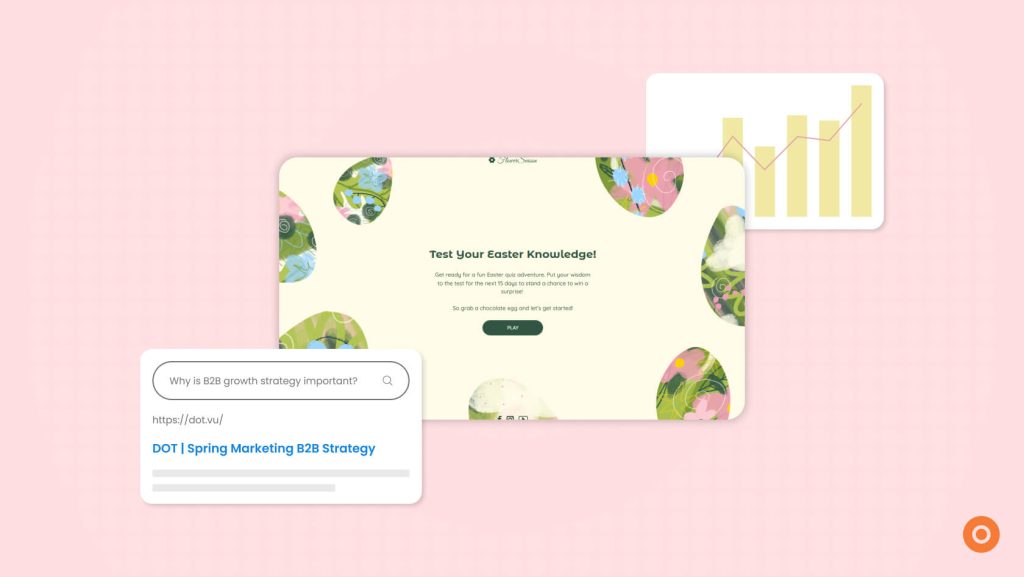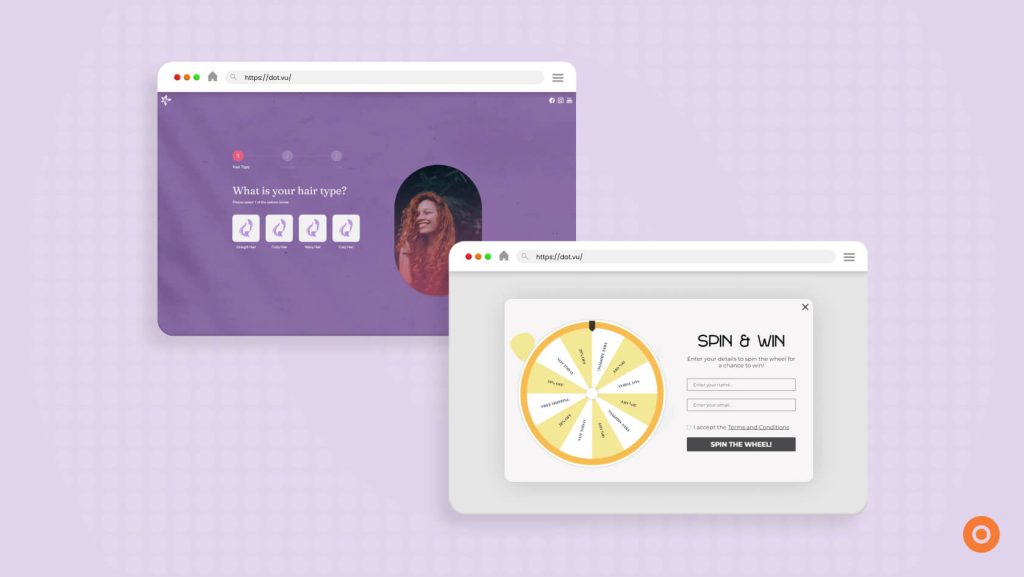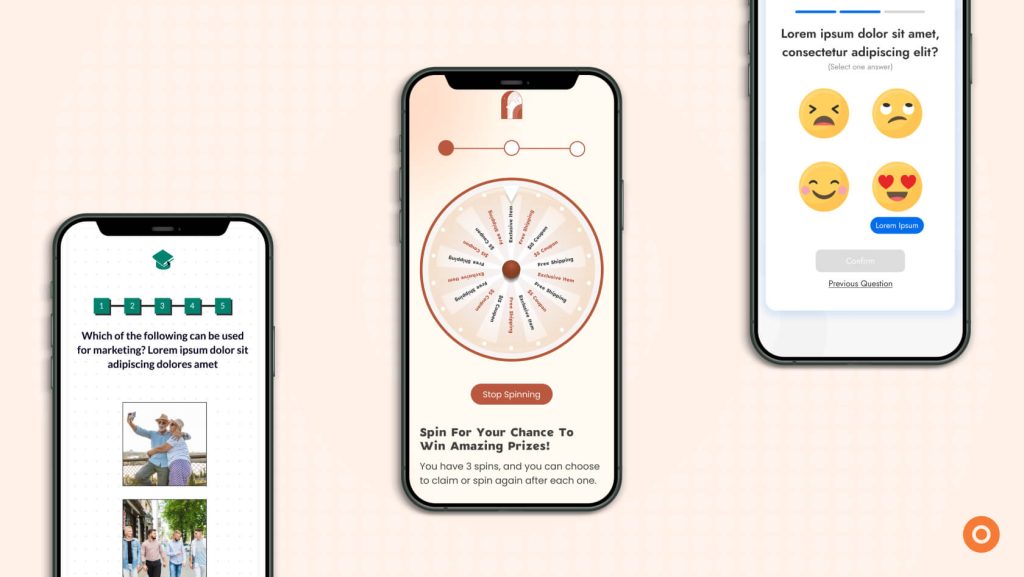
Let’s start with the obvious: trying to do content marketing without any kind of strategy is a mess. It’s basically you tossing a dart while blindfolded and hoping for the best. Every once in a while, you might get lucky and land near the target, but it’s not exactly a method you can count on. But reliably? Not happening.
A content marketing strategy is your direction. It’s the plan that turns content from random output into something that actually drives business results. We’re not here to chase likes just to feel good about ourselves — we’re here to attract the right people, earn their trust, convert them, and keep them around.
And the best part? You don’t need some giant 60-slide presentation filled with fancy terms no one actually uses in real life. You just need a clear plan that makes sense for the people you’re trying to reach. When your strategy is built around your audience, it naturally fits into the rest of your marketing and shapes how your brand talks, grows, and actually delivers value — without all the noise.
Table of Content:
What Is a Content Marketing Strategy?
In its simplest form, a content marketing strategy is the intentional planning, creation, distribution, and measurement of content built to support your business goals.
That’s the textbook version.
In real life, it’s the process of answering questions like:
- What are we trying to achieve?
- Who are we trying to reach?
- What do they genuinely care about?
- How do we get our content in front of them?
- And how do we know if any of this is actually working?
It’s basically a mix of content strategy and content marketing — the why and the how trying to actually work together instead of tug-of-war over your time. The strategy part is the blueprint, the “here’s what we’re even building.” And then content marketing is… well, the team that actually gets the thing built and then somehow ends up hosting the launch party too. Strategy gives you the foundation and the structure, and marketing is the part that makes it real and functional and not just a pretty plan on paper.
If you want to get more creative, check out this blog on creative marketing.
Why a Content Marketing Strategy Is Non-Negotiable
Let’s break this down: having a content marketing strategy isn’t just a “nice idea.” It’s the only way to ensure your content is contributing to something meaningful.
Without a strategy, you end up with:
- Content that’s inconsistent and reactive
- Metrics that look good on paper but don’t drive impact
- A pile of content ideas that aren’t connected to your funnel
- No reliable way to track ROI or improve performance
Now, here’s what a documented strategy gives you:
Strategic Alignment
Every asset — blog posts, landing pages, videos — serves a purpose and ties back to your goals.
Team Clarity
Everyone understands what you’re doing, why you’re doing it, and how to make it happen. It reduces bottlenecks and makes your content engine far more scalable.
Stakeholder Buy-In
When content directly supports lead gen, traffic, or revenue, it becomes a growth driver — not a “nice-to-have.” And that makes buy-in infinitely easier.
Performance Measurement
A strategy lets you apply best practices, track effectiveness, and make data-driven improvements instead of chasing trends.
Content Optimization
Your system gets smarter over time. You’re not just creating content; you’re building an efficient, adaptable engine.
If you’re refining a website content strategy or expanding your content marketing solutions, this foundation pays off. Content stops being just “stuff you publish” and becomes a real business asset.
How to Create a Content Marketing Strategy (Step-by-Step)
Let’s walk through building a strategy that actually gets used — not one that collects dust.
Step 1: Set Goals for Your Content Marketing Strategy
Start with the end in mind. Goals turn random publishing into intentional action. They should be tied directly to your business objectives. For example, you may want to:
- Increase qualified traffic
- Generate a specific number of leads
- Grow brand awareness in a new market
- Educate customers to improve retention
Be specific and measurable. “Get more traffic” is vague. “Increase organic traffic by 40% in six months” gives you something to aim at — and something you can measure.
Step 2: Know Your Audience Before You Build Your Content Marketing Strategy
Assumptions are slippery. Don’t rely on guesswork.
Dig into the details:
- What challenges frustrate them?
- What annoys them?
- What questions or fears keep popping up?
- Where do they spend time online?
- What content formats do they naturally gravitate toward?
Get insights from sales teams, customer support, analytics, surveys, and yes — even Reddit threads. The better you understand your audience, the better your content performs. Full stop.
Step 3: Pick the Right Content Types for Your Content Marketing Strategy
Trend-chasing isn’t a strategy. Pick formats that make sense for your goals, your audience, and your team’s capacity.
Common types include:
- Interactive Content
- Blog posts
- Videos
- Webinars
- Infographics
- Email sequences
- Podcasts
If your resources are limited, pick one or two and focus on doing them exceptionally well instead of spreading yourself thin.
Step 4: Find High-Value Topics for Your Content Marketing Strategy
This is where keyword research comes in.
Start broad with tools like Google Trends, AnswerThePublic, or even YouTube. Then narrow it down by asking:
- Does this topic support our goals?
- Does this keyword pull real traffic?
- Can we create something better than what’s already ranking?
Long-tail and question-based keywords are often high-value opportunities.
Step 5: Prioritize Topics That Strengthen Your Content Marketing Strategy
You’ll gather dozens of ideas — now you need to prioritize.
Filter based on:
- Search volume
- Keyword difficulty
- Relevance to your goals
- Your ability to provide strong expertise
Tackle a mix of high-impact and low-hanging fruit topics to build momentum.
Step 6: Use Interactive Content to Supercharge Your Content Marketing Strategy
Here’s something many marketers overlook: engagement often comes from experiences, not just static content.
Interactive formats like Quizzes, Marketing Games, Product Recommenders, and Shoppable Videos invite participation. They increase time on page, boost conversions, and give you actionable insights about your audience.
Platforms like Dot.vu make this easy to plug into your existing campaigns.
Interactive Content blends utility with storytelling — and it’s not a future trend. It’s already here.
Step 7: Build a Content Calendar to Support Your Content Marketing Strategy
A content calendar keeps your strategy organized and your team aligned.
It can be as simple as a Google Sheet or as advanced as Notion, Trello, Asana, or Airtable.
Include details like:
- Working titles
- Formats
- Status
- Owners
- Deadlines
- Target keywords
The goal is structure, visibility, and accountability.
Step 8: Promote Your Content Like You Mean It
Publishing without distribution is a fast way to bury your work.
Put your content where your audience already spends time:
- Organic social
- Email newsletters
- SEO
- Paid promotion
- Influencer partnerships
- Content syndication
- Internal linking and repurposing
Not every channel needs to be active — choose the ones that matter for your brand and bandwidth.
Step 9: Measure Results & Improve Your Content Marketing Strategy Over Time
This is where your strategy evolves.
Track:
- Traffic sources
- Engagement
- Conversion rates
- Keyword performance
Review everything regularly. Double down on what’s working and refine what isn’t. The goal isn’t perfection — it’s progression.
Start Building Your Content Marketing Strategy Today
That’s the full picture. Creating a content marketing strategy takes effort, but it’s far from complicated. It’s clarity, consistency, and thoughtful execution.
And if you want to accelerate your results, Dot.vu’s 300+ Interactive Content templates can plug directly into your strategy — ready to boost engagement, support lead gen, and actually delight your audience.
Give your content intention. Know who it’s for. Know what you want it to accomplish. And measure the results so you can keep improving.
Let’s build something that truly works.



